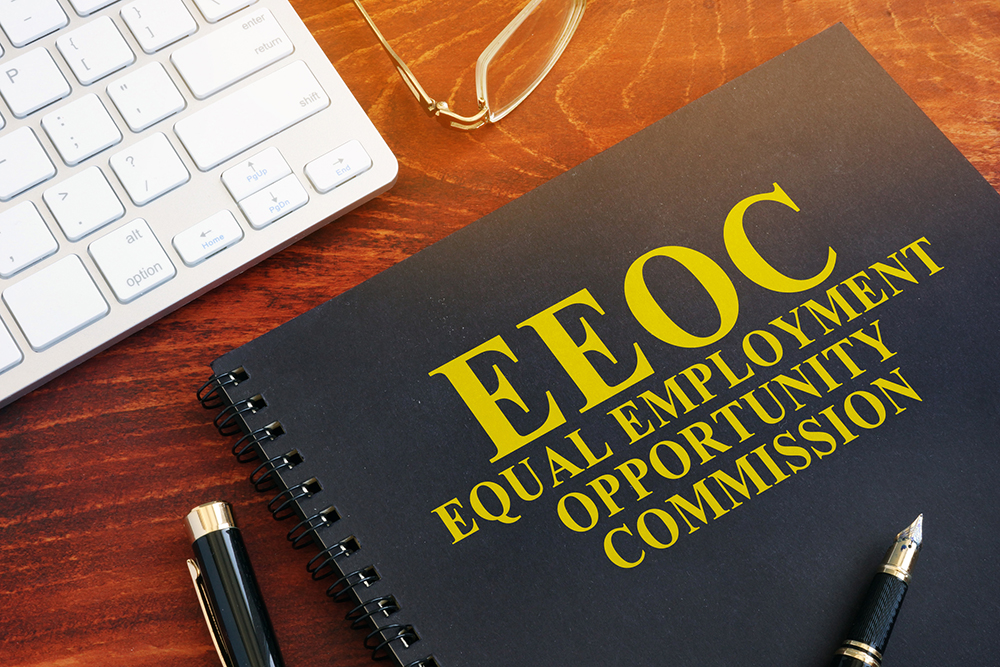Last month, the Equal Employment Opportunity Commission (EEOC) published a new rule affecting its own processes for dealing with employers under investigation. The conciliation process, which is statutorily mandated, occurs after the agency has determined reasonable cause exists to believe an employer has violated an employment statute and is the means by which it attempts to resolve its perceived issues with the employer’s practices.
The new rule, which went into effect on February 16, mandates a significant increase in transparency and is a boon for any employer attempting to resolve an EEOC investigation without litigation.
What is the Conciliation Process?
The normal course of an EEOC investigation begins with a discrimination charge, generally filed by an aggrieved employee. That is followed by an agency investigation into the alleged illegal practices, which may include witness interviews and document requests.
When the EEOC has concluded its investigation, it will issue a determination which either finds (1) reasonable cause to believe the employer has engaged in illegal employment activities or (2) no reasonable cause.
In the latter case, if there’s an individual who filed the charge, the EEOC will also issue a notice of right to sue, and the aggrieved employee’s 90-day window to file a lawsuit commences shortly thereafter. If it finds a reasonable cause, however, it’s required to engage in conciliation efforts before filing its own lawsuit against the employer.
The process is statutorily mandated. Before suing an employer for discrimination, the EEOC must first “endeavor to eliminate [the] alleged unlawful employment practice by informal methods of conference, conciliation, and persuasion.”
Prior to the implementation of the new rule, the methods and vigor with which the agency attempted to reach a settlement with the employer were entirely up to the particular investigator working the case. Often, conciliation discussions were very brief, and the value assigned to the offer to settle was shrouded in mystery. In short, the EEOC had near complete discretion over how to attempt to resolve disputes before filing a lawsuit.
Why the Change?
The EEOC’s stated purpose for introducing the new rule was to better comply with the U.S. Supreme Court’s decision in Mach Mining, LLC v. EEOC, 575 US 480 (2015).
In Mach Mining, the EEOC was investigating an employer for sex discrimination. After determining reasonable cause existed, it sent a letter inviting the employer to participate in informal conciliation and notifying it an agency representative would be in contact. About a year later, it sent the employer another letter, stating it had determined conciliation efforts had been unsuccessful, and it filed suit in federal court.
The defendant-employer filed an affirmative defense alleging the EEOC had failed to engage in conciliation, as required by statute. The agency argued its conciliation efforts weren’t subject to judicial review.
The Supreme Court held the EEOC’s conciliation process was subject to review but the agency had broad discretion in how to implement its conciliation efforts. According to the Court, the EEOC is required to do two things during the conciliation process: (1) inform the employer about the specific allegation against it—describing both what the employer has done and which employees, or class thereof, have suffered as a result and (2) attempt to engage the employer in some form of discussion, oral or written, to give it the opportunity to remedy the alleged practice.
While the Supreme Court’s ruling is rather limited, it sparked a new internal conciliation rule that will be a marked change going forward.
What Does the Rule Require of the EEOC?
Under the newly published rule, once an employer agrees to engage in conciliation with the EEOC, the agency has a duty to provide the employer with a specific set of information, including:
- The identity of the known aggrieved individuals or groups of individuals, unless they have requested anonymity;
- The criteria to be used to identify aggrieved individuals from the pool of potential class members;
- A summary of the EEOC’s legal basis for finding reasonable cause, including how the law was applied to the facts. If there are mitigating facts, the agency must explain how it reached a reasonable cause decision despite the facts;
- A basis for the monetary or other relief demanded, including its calculations underlying the initial conciliation proposal and an explanation thereof; and
- Whether a “systemic, class, or pattern or practice” designation has been made at the time of conciliation, and the basis for that designation.
Additionally, the employer must be provided at least 14 calendar days to respond to the agency’s demand. While it’s mandatory that the EEOC provide this information to the employer, the aggrieved employee is only provided access to it upon request.
What Does This Mean for Employers?
The new changes, which went into effect on February 16, will be applied to charges filed under Title VII of the Civil Rights Act of 1964, the Americans with Disabilities Act (ADA), the Age Discrimination in Employment Act (ADEA), and the Genetic Information Nondiscrimination Act (GINA). The stated goal of the new rule is to increase transparency and foster a greater success rate for resolving claims without litigation.
Regardless of whether it ends up creating the desired effect, the new rule is certainly a win for employers. It will provide them with an increased ability to gauge the strength of the EEOC’s claims, including the damage model instituted by the agency. Further, forcing the EEOC to disclose a summary of facts, and how it applied extant law to those facts, also acts as a form of “free” discovery should the case escalate to litigation.
Finally, having concrete rules of conciliation will enable the employer to know, more firmly, where it stands in the process, as opposed to merely understanding there’s some nebulous conciliation effort on-going.
Harrison Kosmider is an attorney in the Tulsa, Oklahoma, office of McAfee & Taft. He may be contacted at harrison.kosmider@mcafeetaft.com.

